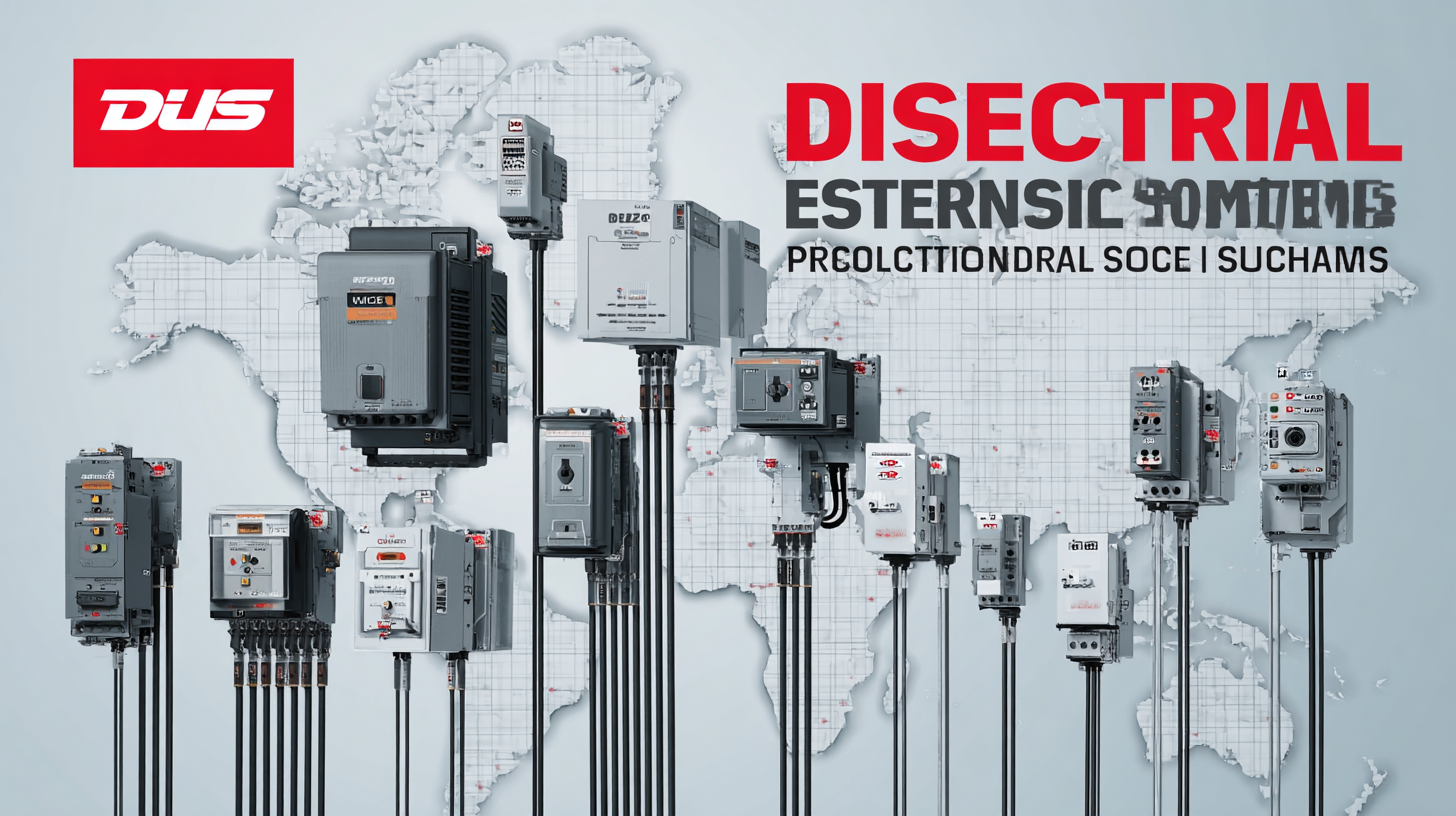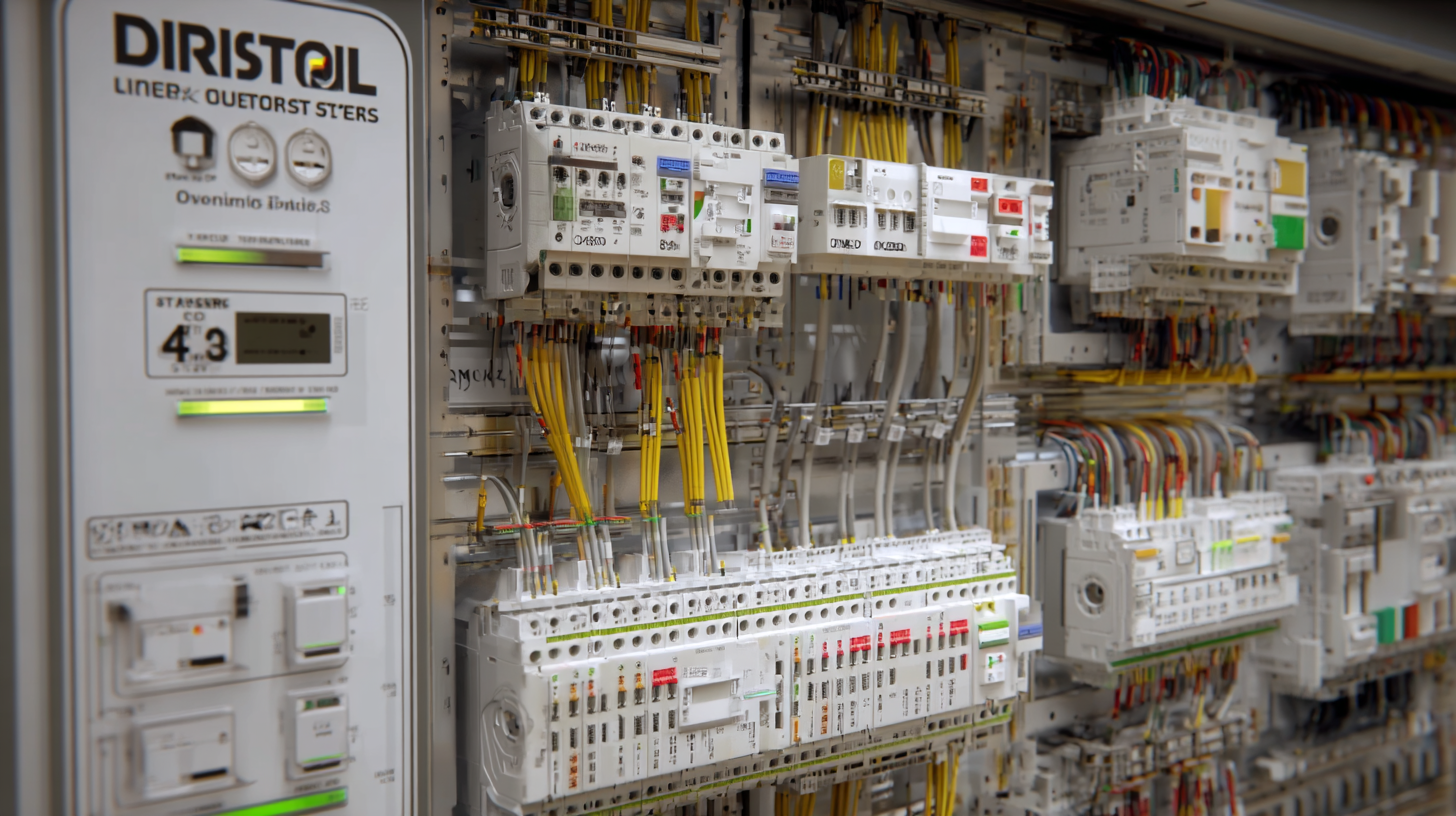
Unlocking Global Success with Premium Electrical Distribution Systems from China
The rising demand for reliable and efficient Electrical Distribution Systems is reshaping the global market landscape, particularly as industries seek sustainable solutions aligned with the Industry 2025 technology trends. According to a recent market research report by Fortune Business Insights, the global electrical distribution systems market is projected to reach USD 200 billion by 2027, growing at a CAGR of 7.5% from 2020. This growth underscores the necessity for premium products that not only enhance operational efficiency but also support smart grid initiatives and renewable energy integration. With China's robust manufacturing capabilities and innovative technologies, the nation is poised to be a key player in providing advanced electrical distribution solutions, ensuring global success for various sectors striving towards modernization and sustainability. By unlocking the potential of these systems, businesses can achieve greater reliability, efficiency, and responsiveness to market demands.

Innovative Features of Premium Electrical Distribution Systems from China
Premium electrical distribution systems from China are setting new standards in the global market, thanks to their innovative features that enhance efficiency and reliability. These systems incorporate smart technology, enabling real-time monitoring and control, which allows users to optimize energy consumption and improve power management. The integration of IoT solutions not only facilitates predictive maintenance but also reduces downtime, ensuring that businesses operate smoothly and efficiently.
Moreover, the advanced materials used in these distribution systems contribute to their durability and performance. With an emphasis on sustainability, many manufacturers are now utilizing eco-friendly materials that enhance energy efficiency while minimizing environmental impact. Additionally, modular designs allow for easier installation and scalability, making these systems suitable for various applications, from industrial complexes to residential buildings. As the demand for high-quality electrical solutions rises globally, China's commitment to innovation in electrical distribution systems positions it as a leading player in the industry.
Essential Technical Specifications for Optimized Performance
When selecting premium electrical distribution systems, understanding the essential technical specifications is crucial for optimized performance. Key factors such as voltage rating, ampacity, and insulation type play pivotal roles in ensuring that the system can handle the required load while maintaining safety and efficiency. For instance, choosing a voltage rating that aligns with regional requirements can prevent equipment failures and enhance long-term reliability.
Tip: Always verify the local electrical codes and standards when selecting components to ensure compliance and avoid costly penalties.

Moreover, consider the thermal management of your distribution system. An efficient thermal design can significantly reduce the chances of overheating, prolonging the life of the system. Look for systems equipped with features such as heat sinks and effective airflow designs to maintain optimal temperatures.
Tip: Regular maintenance and inspections can identify potential hot spots within the system early, helping you to mitigate risks before they escalate. By focusing on these technical specifications, companies can unlock unparalleled performance and reliability in their electrical distribution solutions sourced from China.
Comparative Analysis of Global Standards for Electrical Distribution
In the rapidly evolving landscape of electrical distribution systems, understanding global standards is crucial for ensuring compatibility and safety across international markets. Different regions have established their own regulatory frameworks, which can significantly impact the design and implementation of electrical distribution solutions. For instance, while the IEC (International Electrotechnical Commission) standards dominate in Europe and many other parts of the world, North America largely adheres to ANSI (American National Standards Institute) guidelines. This divergence necessitates a careful evaluation for manufacturers, especially those seeking to penetrate diverse markets.
When examining China's approach to electrical distribution systems, it becomes evident that the country is aligning itself with international standards while also developing its own unique requirements. The Chinese National Standards (GB) encompass a wide range of specifications that cater to domestic needs, promoting both safety and efficiency. As Chinese manufacturers aim to unlock global success, they must navigate these varied standards and adapt their products accordingly. Embracing rigorous testing and certification processes that meet or exceed international benchmarks can position Chinese electrical distribution systems favorably in the global market, fostering trust and driving international sales.
Unlocking Global Success with Premium Electrical Distribution Systems from China - Comparative Analysis of Global Standards for Electrical Distribution
| Region | Voltage Level (kV) | Frequency (Hz) | Standardization Body | Key Standards |
|---|---|---|---|---|
| North America | 15, 25, 35 | 60 | ANSI | C57, IEEE Std 80 |
| Europe | 10, 20, 30 | 50 | IEC | EN 50160 |
| Asia-Pacific | 11, 22, 33 | 50/60 | IEC | AS/NZS 61000 |
| Latin America | 13.8, 34.5 | 60 | IEEE | IEEE 1159 |
| Africa | 11, 22, 33 | 50 | SANS | SANS 60076 |
Case Studies of Successful Implementations in Various Industries
The rise of Chinese electrical distribution systems has transformed various industries around the globe. One notable case study is the implementation of advanced electrical distribution systems in the manufacturing sector. A leading automotive factory in Germany adopted a premium electrical distribution system sourced from China, enhancing energy efficiency by 25%. This not only reduced operational costs but also improved the factory’s overall production capacity. The integration of smart technologies allowed for real-time monitoring, ensuring that the power supply is optimized and reducing downtime due to electrical failures.
In the renewable energy sector, a wind farm in Brazil utilized Chinese electrical distribution solutions to optimize their energy output. By leveraging high-quality transformers and switchgear, the farm experienced a remarkable 30% increase in energy transmission efficiency. The robust design of these systems allows them to withstand extreme weather conditions, making them ideal for outdoor installations. Such successful implementations highlight how premium electrical distribution systems from China are pivotal in driving progress across various industrial landscapes, making the case for global collaboration and innovation in electrical engineering.

Future Trends in Electrical Distribution Technology and Design
As the landscape of electrical distribution technology continues to evolve, several future trends are emerging that promise to reshape the industry. One significant trend is the integration of smart grid technology, which enhances the efficiency and reliability of electrical distribution systems. This approach allows for real-time monitoring and management, enabling utilities to detect and respond to issues more effectively. The adoption of advanced sensors and data analytics plays a crucial role in this transformation, ensuring optimal performance and minimizing downtime.
Another trend is the rise of renewable energy sources and their impact on electrical distribution design. As countries worldwide commit to reducing their carbon footprint, the need for systems that can efficiently handle distributed energy resources becomes paramount. This requires innovative solutions that can seamlessly incorporate solar, wind, and other renewable energies into existing grids. Moreover, with the shift towards decentralized energy systems, electrical distribution designs must prioritize flexibility and resilience, ensuring they can adapt to changing energy landscapes while maintaining high safety standards.